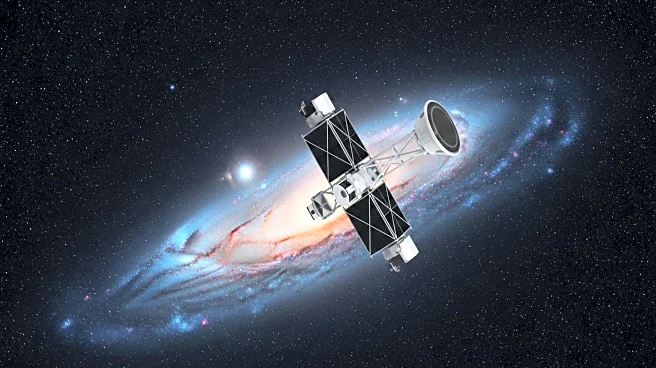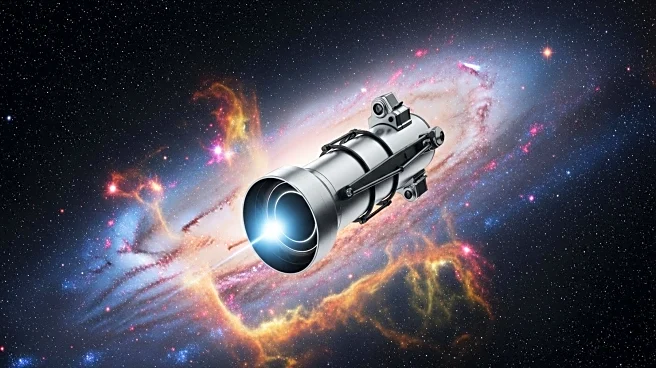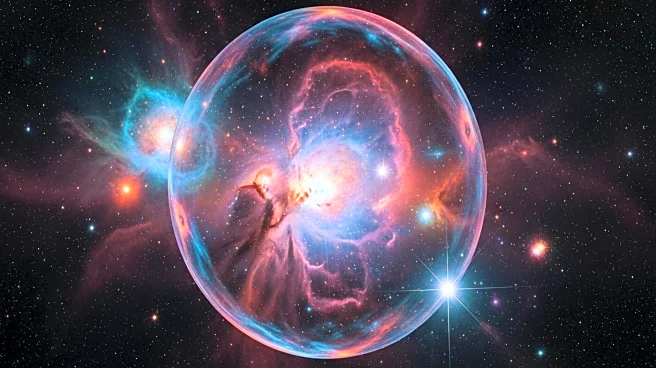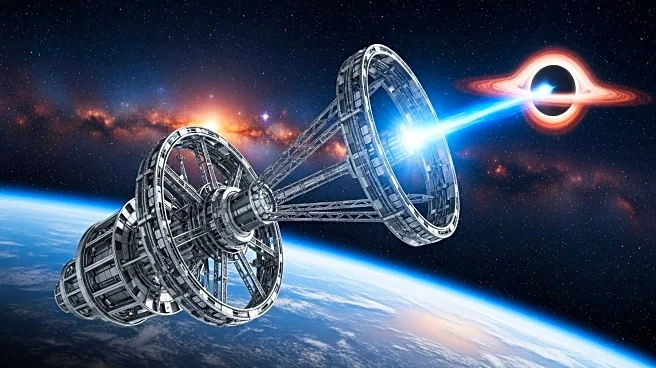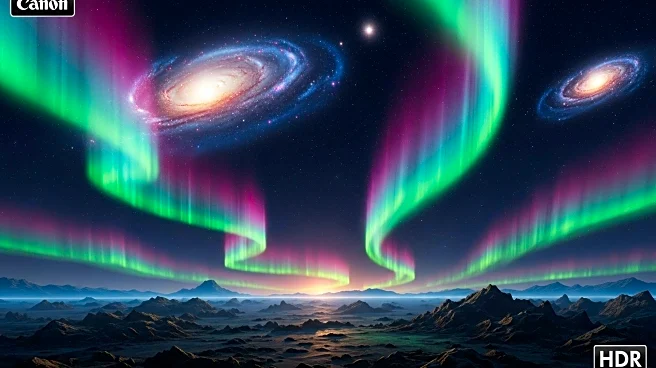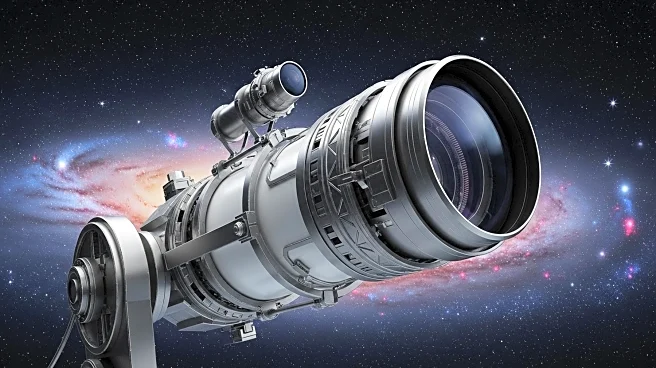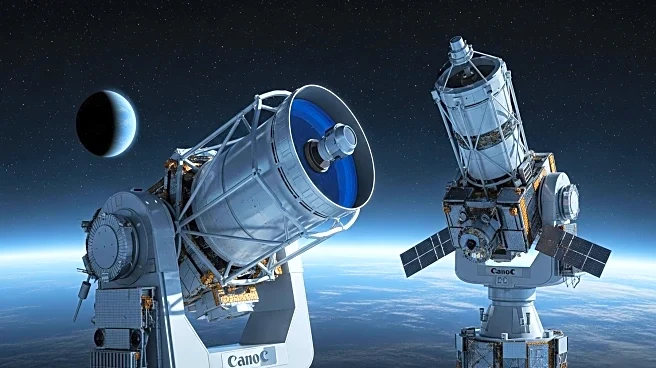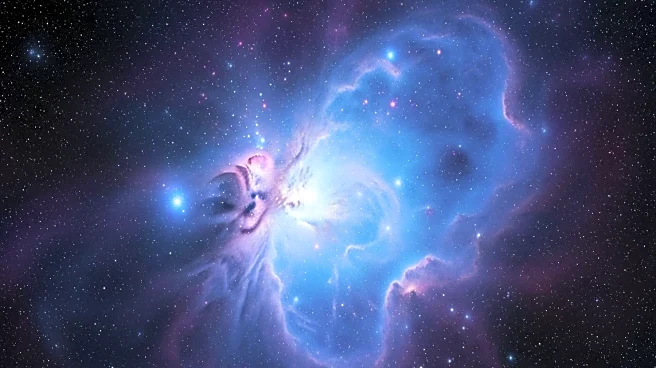What's Happening?
The James Webb Space Telescope (JWST) has provided the clearest infrared view of the M87 galaxy's supermassive black hole jet. This observation reveals new details about the jet, including a faint counter-jet moving in the opposite direction. The M87 galaxy, located about 55 million light-years from Earth, is home to a supermassive black hole known as M87*. The JWST's Near Infrared Camera (NIRCam) was used to capture the jet in four infrared bands, allowing researchers to isolate the jet from surrounding starlight and dust.
Why It's Important?
This discovery is crucial for understanding the physics of black holes and the extreme environments they create. The ability to observe the jet and its counter-jet in such detail provides insights into the dynamics of charged particles and magnetic fields near black holes. These findings could enhance our understanding of how black holes influence their host galaxies and contribute to the broader knowledge of cosmic phenomena. The study of such jets also helps in understanding the role of black holes in galaxy formation and evolution.
Beyond the Headlines
The observation of the M87 jet challenges previous assumptions about black hole jets and their interactions with surrounding matter. The detailed view of the jet's structure, including its helical form and substructures, offers a new perspective on the complex particle dynamics at play. This research could lead to a reevaluation of existing models of black hole behavior and their impact on the universe.

